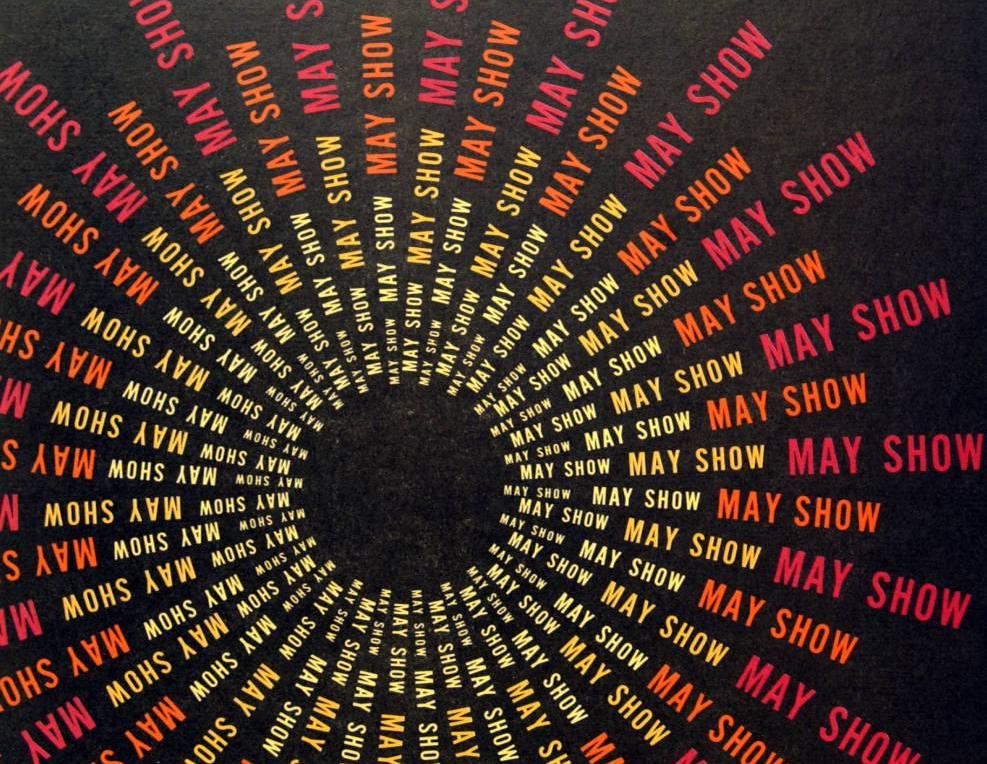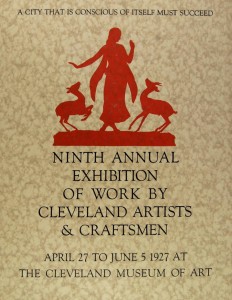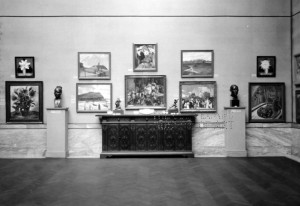“An Expression of Cleveland’s Genius”

One hundred years ago, the first director of the newly-created Cleveland Museum of Art conceived of an idea that would become an important element in that city’s art scene for most of the coming century. In his January 1914 report to the museum’s Board of Trustees, Frederic Allen Whiting proposed creating what he described as “an annual exhibition of Ohio born or trained artists, to be managed by a Jury and hanging committee chosen by the exhibiting artists.” Five years later, this idea first came to fruition as the “Annual Exposition of Cleveland Artists & Craftsmen”–although it would soon come to be known by the more succinct and memorable name “the May Show.”

Works by Cleveland-area artists were exhibited for the month of May all throughout the galleries of the museum. Although artists could originally submit works for exhibition that they had created in the last ten years, the May Show’s second year saw a rule change that only works from the previous year could be included. And while only those artists born or living in Cuyahoga County were eligible to show, their creations could fall into a wide variety of categories, including painting, graphic arts, photography, sculpture, basketry, enamelwork, and more. Eventually, a cap was placed on the number on entries allowed per artist, and the number of submission categories was streamlined to five. The geographic area from which artists could enter was expanded in 1961 to all thirteen counties of the Western Reserve, and from 1977 through the end of the show, artists born in any of the thirteen counties could submit works even if they no longer lived in the region.
In time, the show grew to be much more selective. From its origins as a forum for artists to sell original and duplicate artwork and crafted items to support themselves (particularly during the Depression era), it became a competitive exhibition and art competition with well-known judges, including George Bellows in 1921, Edward Hopper in 1932, Georgia O’Keeffe in 1937, and Ansel Adams in 1963. Over the years, winning works were rewarded with cash prizes and artists were recognized with certificates and medals for their achievements.

During its last decades, the May Show began to draw criticism from the arts community, some of whom saw it as an unnecessary effort highlighting well-known and established individuals rather than encouraging and promoting local artists. After a two-year hiatus during the museum’s 75th anniversary celebrations in 1991 and 1992, the last May Show was held in the spring of 1993. But the once-annual event still holds a prominent place in the memories of those from Cleveland and beyond, and there are many artists and visitors who would like to see it emerge again in the 21st century. Interested in learning more about the history of the May Show at the Cleveland Museum of Art? We invite you to visit Ohio Memory to view more photographs and posters related to the May Show, or explore the May Show Database from CMA’s Ingalls Library and Museum Archives for artist and object history covering all nine decades.
Thanks to Lily Birkhimer, Digital Projects Coordinator at the Ohio History Connection, for this week’s post!



Leave a Reply
You must be logged in to post a comment.